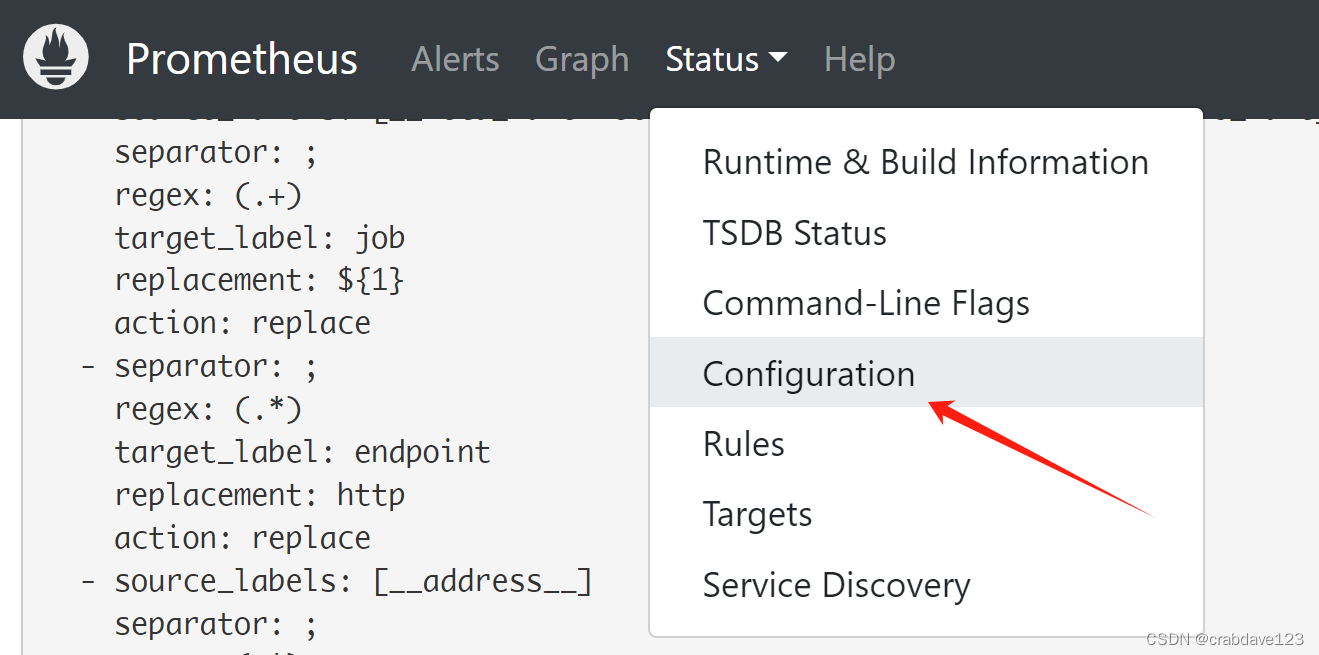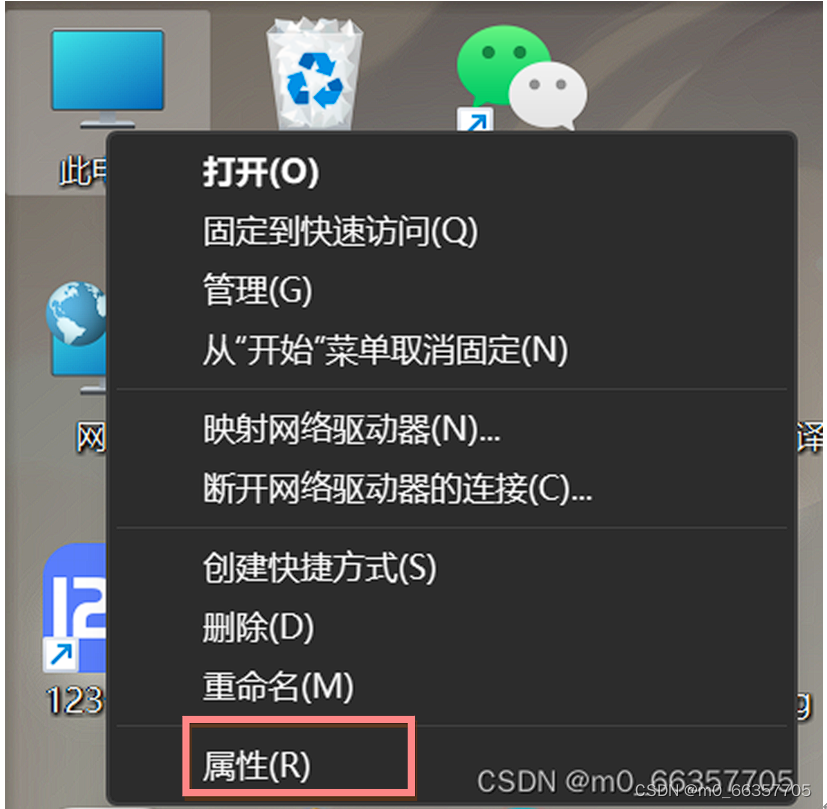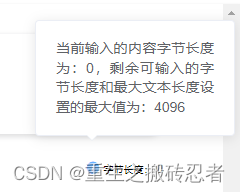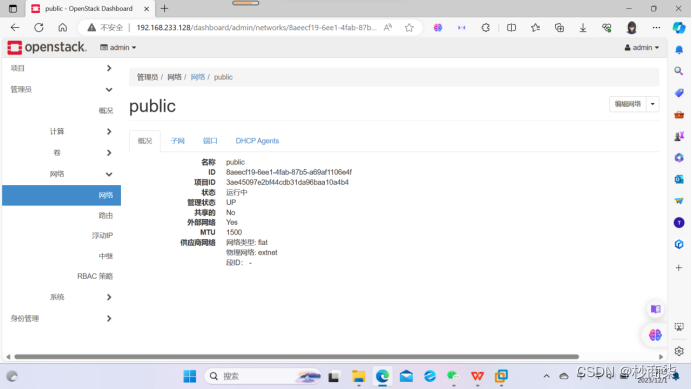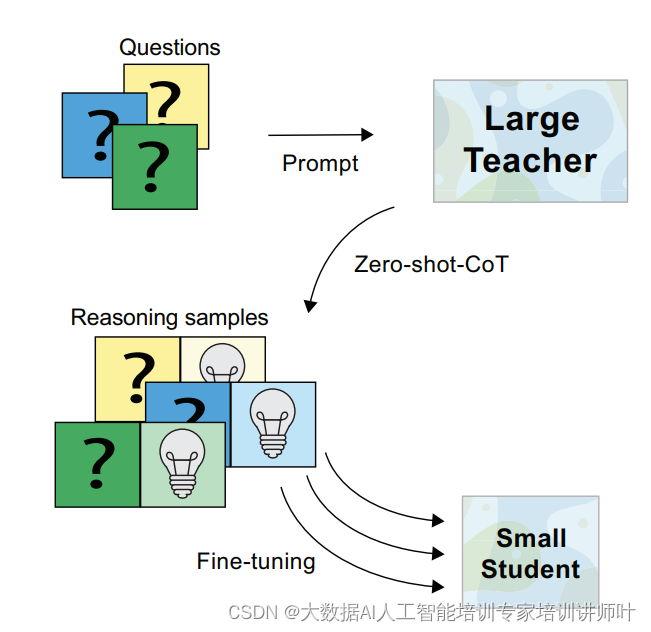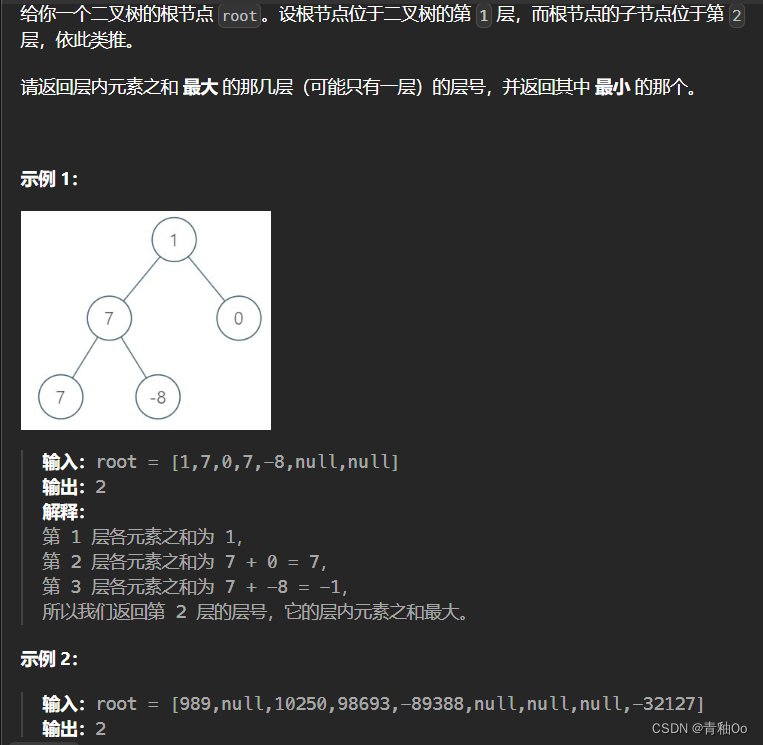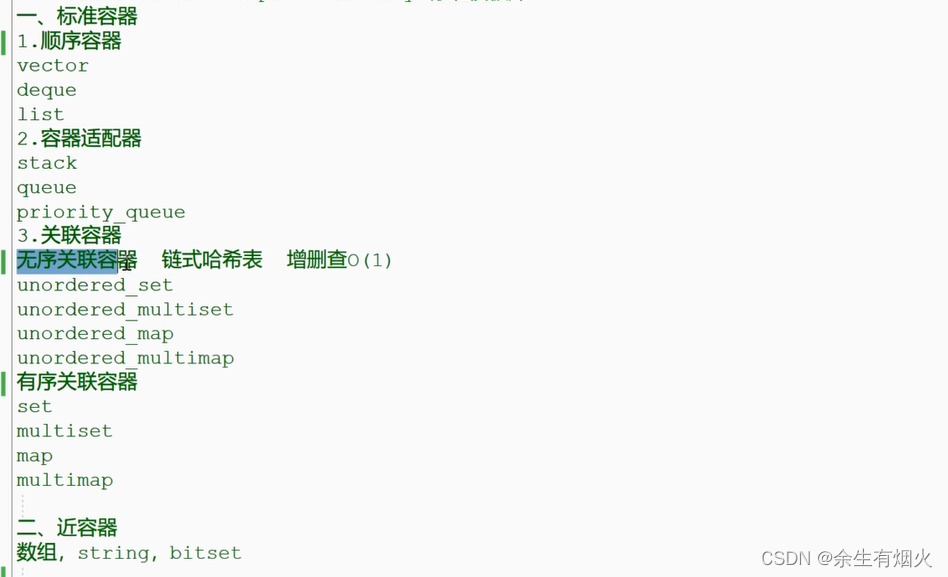
一、vector容器
template<typename T>
class Allocator{
public:
T* allocator(size_t size){
// 负责内存开辟
return (T*)malloc(sizeof(T) * size);
}
void deallocate(void * p){
free(p);
}
void construct(T*p,const T&val){
// 定位new
new (p) T(val);
}
void destroy(T*p){
p->~T();
}
};
template<typename T, typename Alloc = Allocator<T>>
class vector{
public:
vector(int size=10){
// 需要把内存开辟和对象构造分开处理
// _first = new T[size];
_first= _allocator.allocator(size);
_end = _first + size;
_last =_first;
}
~vector(){
// delete[] _first;
// 析构容器有效的元素,然后释放_first指针指向的堆内存
for (T* p = _first; p != _last; ++p){
_allocator.destroy(p); // 把_first指针指向的数组的有效元素进行析构操作
}
_allocator.deallocate(_first); // 释放堆上的数组内存
_first=_last=_end= nullptr;
}
vector(const Vector<T>& src){
int size = src._last-src._first;
// _first =new T[size];
_first = _allocator.allocator(size);
int len=src._last-src._first;
for(int i=0;i<len;i++){
// _first[i]=src._first[i];
_allocator.construct(_first + i, src._first[i]);
}
_last = _first + len;
_end = _first + size;
}
vector<T>& operator=(const vector<T>&src){
if(this==&src){
return *this;
}
// delete[] _first;
for (T* p = _first; p != _last; ++p)
{
_allocator.destroy(p); // 把_first指针指向的数组的有效元素进行析构操作
}
_allocator.deallocate(_first);
int size = src._end - src._first;
int len = src._last - src._first;
// _first = new T[size];
_first=_allocator.allocate(size);
for (int i=0; i<len; ++i) {
// _first[i] = src._first[i];
_allocator.construct(_first + i, src._first[i]);
}
_last = _first + len;
_end = _first + size;
return *this;
}
void push_back(const T &x) {
if (full()) {
resize();
}
// *_last ++ = x;
_allocator.construct(_last, x);
_last++;
}
void pop_back() {
if (empty()) {
return;
}
_allocator.destroy(_last);
--_last;
}
T back() const {
if (empty()) {
}
return *(_last-1);
}
bool full() {
return _end == _last;
}
bool empty() {
return _last == _first;
}
void resize() {
int size=_end-_first;
// T *tmp = new T[2*size];
T* tmp = _allocator.allocator(2 * size);
int len = _last-_first;
// for(int i=0; i<len; ++i) {
// tmp[i] = _first[i];
// }
// delete[] _first;
for (int i = 0; i < size; ++i)
{
//ptmp[i] = _first[i];
_allocator.construct(tmp + i, _first[i]);
}
//delete[]_first;
for (T* p = _first; p != _last; ++p)
{
_allocator.destroy(p);
}
_allocator.deallocate(_first);
_first = tmp;
_end = _first + 2*size;
_last = _first + len;
}
int size() const{
return _last-_first;
}
T& operator[](int index){
if(index<0 || index>=size()){
throw "OutOfException";
}
return _first[index];
}
// 迭代器一般实现成容器的嵌套类型
class iterator{
public:
iterator(T* ptr = nullptr):_ptr(ptr){}
bool operator !=(const iterator &it) const{
return _ptr !=it._ptr;
}
void operator++(){
_ptr++;
}
T* operator*() {return *_ptr;}
const T& operator*()const {return *_ptr;}
private:
T* _ptr;
};
// 给容器提供begin() 和end()方法
iterator begin(){return iterator(_first);}
iterator end(){return iterator(_last);}
// for each的底层也是iterator
private:
T* _first;
T* _last;
T* _end;
Alloc _allocator; // // 定义容器的空间配置器对象
};
int main() {
Test t1;
Test t2;
vector<Test> vec;
vec.push_back(t1);
vec.push_back(t2);
cout << "===========================" << endl;
vec.pop_back();
cout << "===========================" << endl;
return 0;
}二、迭代器失效
迭代器失效是指:迭代器的底层其实就是容器的原生指针,插入元素可能导致容器内部的数据结构重新分配,从而使得原先的迭代器指向的位置不再有效;删除元素可能导致迭代器指向的位置被移动或删除,从而使得原先的迭代器不再指向期望的位置。也就是说原来的指针指向的内容被改变了,而不是现在内存中存的。
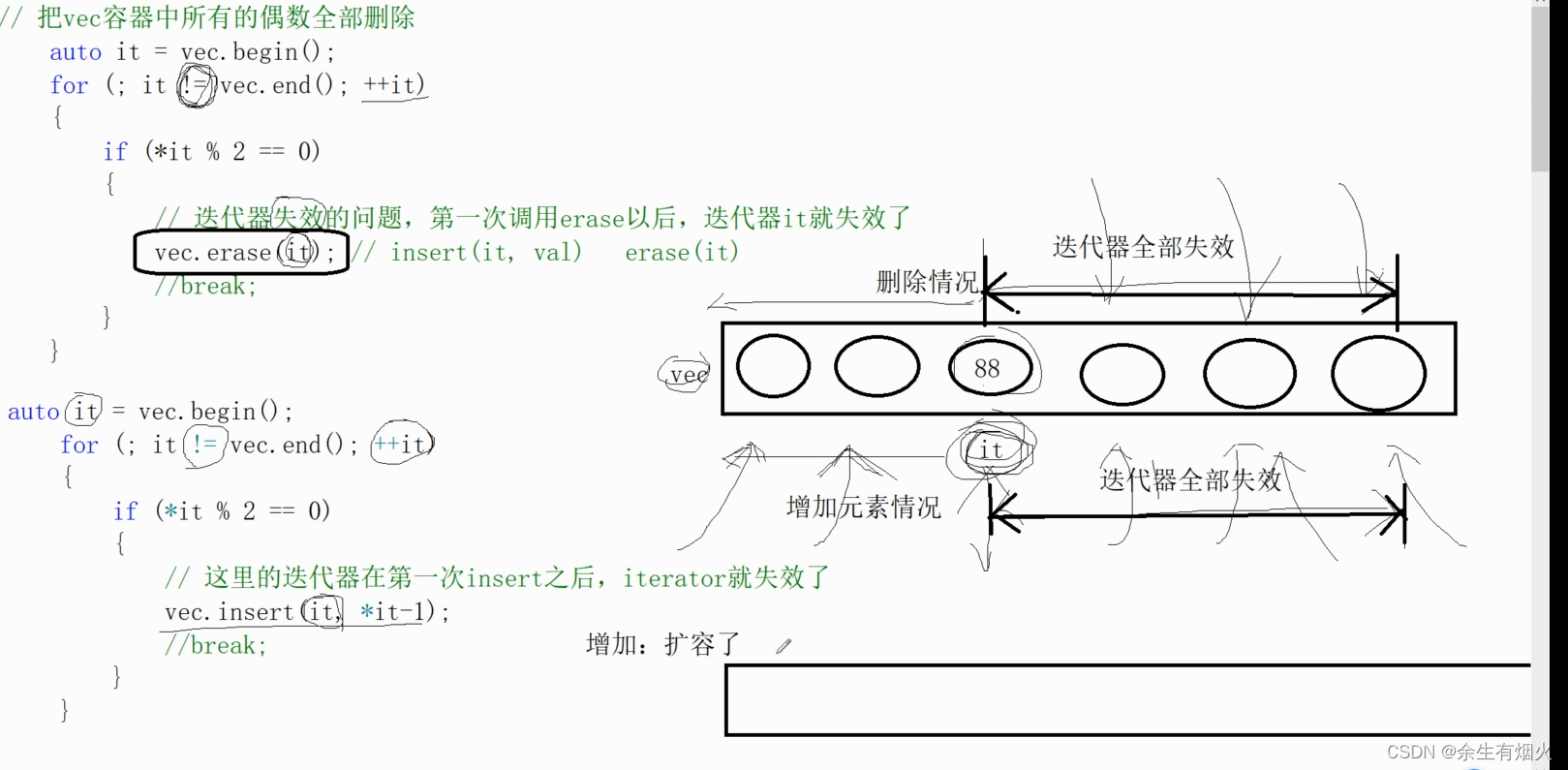
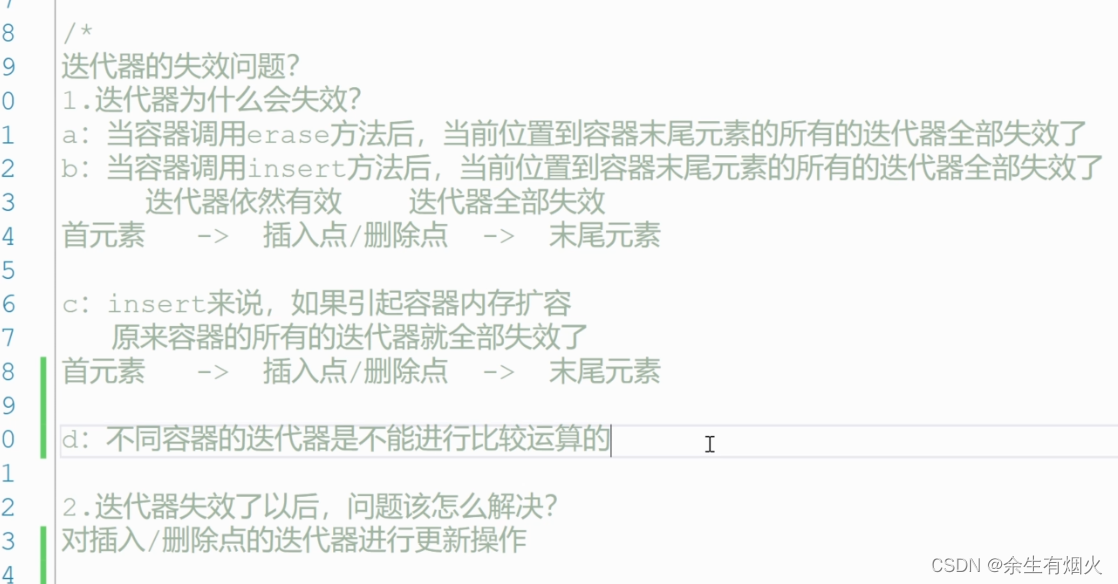
怎么判断迭代器失效没有:
容器迭代器失效增加代码,它是一个结构体维护了一个链表。cur是指向某一个结构体的指针,又定义了一个指向下一个Iterator_Base节点的地址,还定义了一个头节点。记录了用户从中获取的哪一个元素的迭代器,记录在Iterator_Base链表中,哪一个迭代器增加或删除要让其失效并重新更新。
然后判断链表中的迭代器,看它是否在插入、删除点和_last之间,将会失效,失效的话将迭代器的容器对象赋值为nullptr,再进行 operator != 、 operator++ 、 insert、erase进行操作时候,先判断迭代器是否失效。
void verify(T* first,T* last){
Iterator_Base *pre = &this->_head;
Iterator_Base *it =this->_head._next;
while(it!= nullptr){
if(it->_cur->_ptr >first && it->_cur->_ptr <=last){
it->_cur->_pVec = nullptr;
pre->_next =it->_next;
delete it;
it=pre->_next;
}else{
pre=it;
it=it->_next;
}
}
}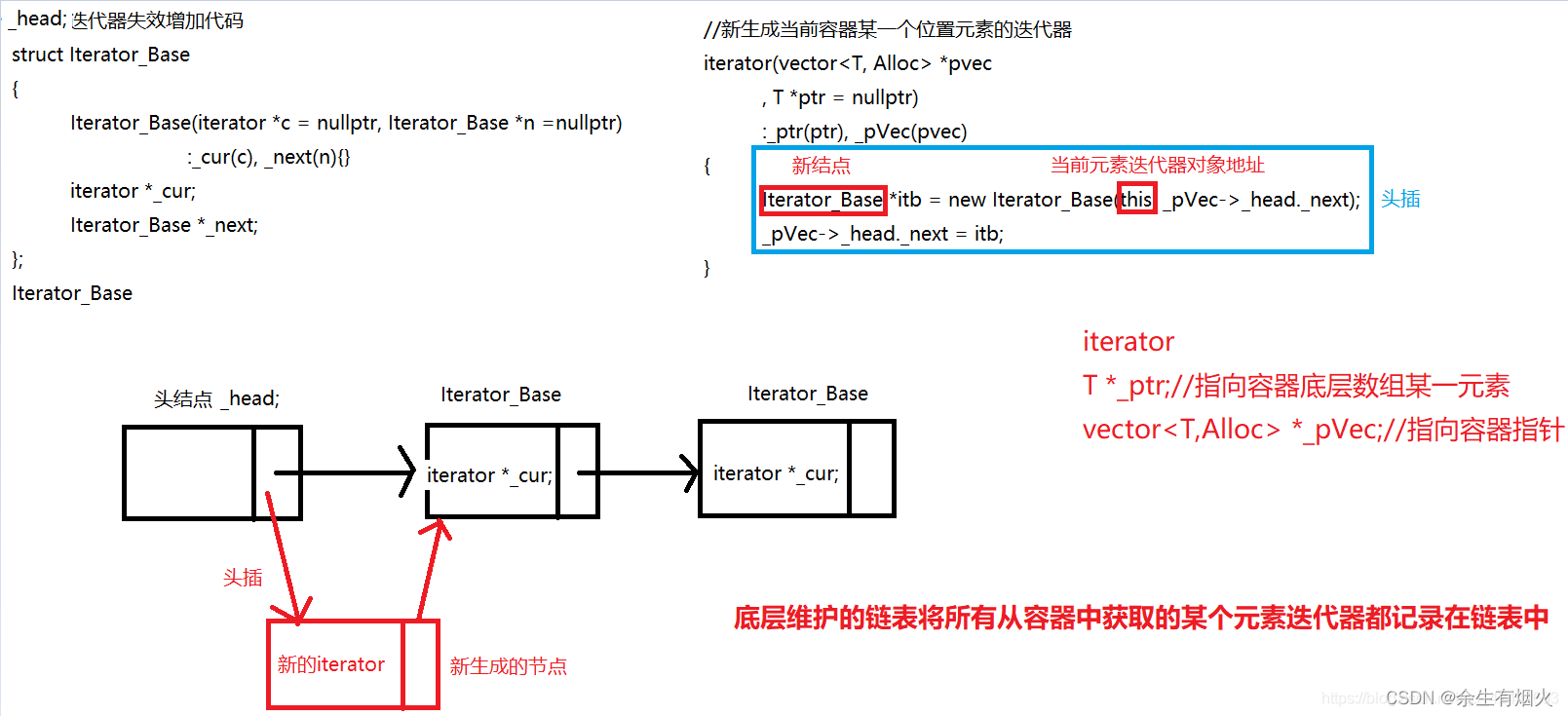
所有代码:
//
// Created by zhangchuang on 2024/4/22.
//
#include <iostream>
using namespace std;
//#include <vector>
template<typename T>
class Allocator{
public:
T* allocator(size_t size){
// 负责内存开辟
return (T*)malloc(sizeof(T) * size);
}
void deallocate(void * p){
free(p);
}
void construct(T*p,const T&val){
// 定位new
new (p) T(val);
}
void destroy(T*p){
p->~T();
}
};
template<typename T, typename Alloc = Allocator<T>>
class vector{
public:
vector(int size=10){
// 需要把内存开辟和对象构造分开处理
// _first = new T[size];
_first= _allocator.allocator(size);
_end = _first + size;
_last =_first;
}
~vector(){
// delete[] _first;
// 析构容器有效的元素,然后释放_first指针指向的堆内存
for (T* p = _first; p != _last; ++p){
_allocator.destroy(p); // 把_first指针指向的数组的有效元素进行析构操作
}
_allocator.deallocate(_first); // 释放堆上的数组内存
_first=_last=_end= nullptr;
}
vector(const vector<T>& src){
int size = src._last-src._first;
// _first =new T[size];
_first = _allocator.allocator(size);
int len=src._last-src._first;
for(int i=0;i<len;i++){
// _first[i]=src._first[i];
_allocator.construct(_first + i, src._first[i]);
}
_last = _first + len;
_end = _first + size;
}
vector<T>& operator=(const vector<T>&src){
if(this==&src){
return *this;
}
// delete[] _first;
for (T* p = _first; p != _last; ++p)
{
_allocator.destroy(p); // 把_first指针指向的数组的有效元素进行析构操作
}
_allocator.deallocate(_first);
int size = src._end - src._first;
int len = src._last - src._first;
// _first = new T[size];
_first=_allocator.allocate(size);
for (int i=0; i<len; ++i) {
// _first[i] = src._first[i];
_allocator.construct(_first + i, src._first[i]);
}
_last = _first + len;
_end = _first + size;
return *this;
}
void push_back(const T &x) {
if (full()) {
resize();
}
// *_last ++ = x;
_allocator.construct(_last, x);
_last++;
}
void pop_back() {
if (empty()) {
return;
}
// 验证迭代器是否失效
verify(_last-1, _last);
// 如果是erase 验证verify(it._ptr, _last);
// insert 验证verify(it._ptr, _last);
_allocator.destroy(_last);
--_last;
}
T back() const {
if (empty()) {
}
return *(_last-1);
}
bool full() {
return _end == _last;
}
bool empty() {
return _last == _first;
}
void resize() {
int size=_end-_first;
// T *tmp = new T[2*size];
T* tmp = _allocator.allocator(2 * size);
int len = _last-_first;
// for(int i=0; i<len; ++i) {
// tmp[i] = _first[i];
// }
// delete[] _first;
for (int i = 0; i < size; ++i)
{
//ptmp[i] = _first[i];
_allocator.construct(tmp + i, _first[i]);
}
//delete[]_first;
for (T* p = _first; p != _last; ++p)
{
_allocator.destroy(p);
}
_allocator.deallocate(_first);
_first = tmp;
_end = _first + 2*size;
_last = _first + len;
}
int size() const{
return _last-_first;
}
T& operator[](int index){
if(index<0 || index>=size()){
throw "OutOfException";
}
return _first[index];
}
// 迭代器一般实现成容器的嵌套类型
class iterator{
public:
iterator(vector<T,Alloc>*pvec= nullptr,T* ptr = nullptr):_ptr(ptr),_pVec(pvec){
Iterator_Base* itb = new Iterator_Base(this,_pVec->_head._next);
_pVec->_head._next=itb;
}
bool operator !=(const iterator &it) const{
// 检查迭代器的有效性
if(_pVec == nullptr || _pVec!=it._pVec){
throw "iterator incompatable!";
return false;
}
return _ptr !=it._ptr;
}
void operator++(){
// 检查迭代器的有效性,迭代器失效为空
if(_pVec== nullptr){
throw "iterator invalid";
}
_ptr++;
}
T* operator*() {return *_ptr;}
const T& operator*()const {return *_ptr;}
private:
T* _ptr;
vector<T,Alloc> *_pVec;
};
// 给容器提供begin() 和end()方法
iterator begin(){return iterator(_first);}
iterator end(){return iterator(_last);}
// 容器迭代器失效增加代码
struct Iterator_Base{
Iterator_Base(iterator *c = nullptr , Iterator_Base *n = nullptr):_cur(c),_next(n){}
iterator *_cur;
Iterator_Base *_next;
};
Iterator_Base _head;
void verify(T* first,T* last){
Iterator_Base *pre = &this->_head;
Iterator_Base *it =this->_head._next;
while(it!= nullptr){
if(it->_cur->_ptr >first && it->_cur->_ptr <=last){
it->_cur->_pVec = nullptr;
pre->_next =it->_next;
delete it;
it=pre->_next;
}else{
pre=it;
it=it->_next;
}
}
}
iterator insert(iterator it ,const T &val){
// 1. 不考虑扩容
// 2. 不考虑it._ptr的指针合法性
verify(it._ptr -1 ,_last);
T* p = _last;
while(p>it._ptr){
_allocator.construct(p,*(p-1));
_allocator.destroy(p-1);
p--;
}
_allocator.construct(p,val);
_last++;
return iterator(this,p);
}
iterator erase(iterator it ){
// 1. 不考虑扩容
// 2. 不考虑it._ptr的指针合法性
verify(it._ptr -1 ,_last);
T* p = _last;
while(p<_last-1){
_allocator.destroy(p);
_allocator.construct(p,*(p+1));
p++;
}
_allocator.destroy(p);
_last--;
return iterator(this,it._ptr);
}
// for each的底层也是iterator
private:
T* _first;
T* _last;
T* _end;
Alloc _allocator; // // 定义容器的空间配置器对象
};
/*
vector怎么
*/
#if 0
int main(){
// std::vector<int>vec{1,2,3,4,5,6,8};
/*
迭代器失效问题
1. 删除元素
for(auto it =vec.begin();it!=vec.end();it++){
if(*it%2==0){
vec.erase(it);
}
}
// 2.增加元素
for(auto it =vec.begin();it!=vec.end();it++){
if(*it%2==0){
vec.insert(it,*it-1);
}
}
*/
// 2。 解决办法 -- 更新迭代器
// 删除
auto it =vec.begin();
while(it!=vec.end()){
if(*it%2==0){
it=vec.erase(it);
}else{
++it;
}
}
// 增加
for(auto it =vec.begin();it!=vec.end();it++){
if(*it%2==0){
vec.insert(it,*it-1);
++it;
}
}
}
#endif























